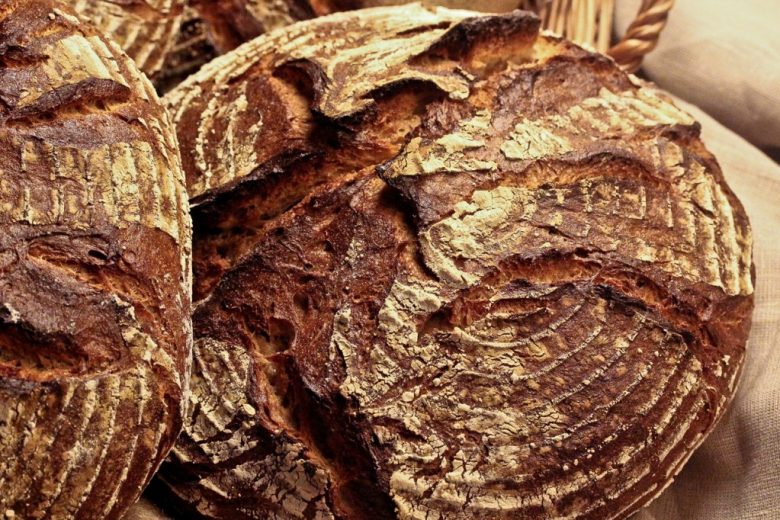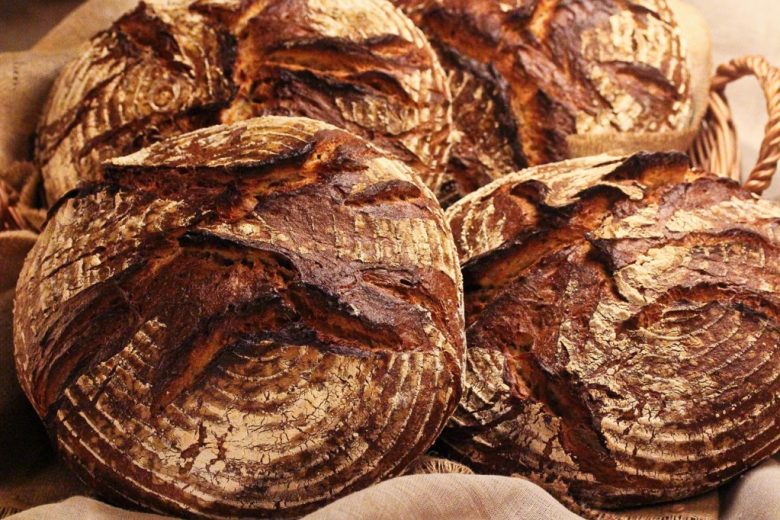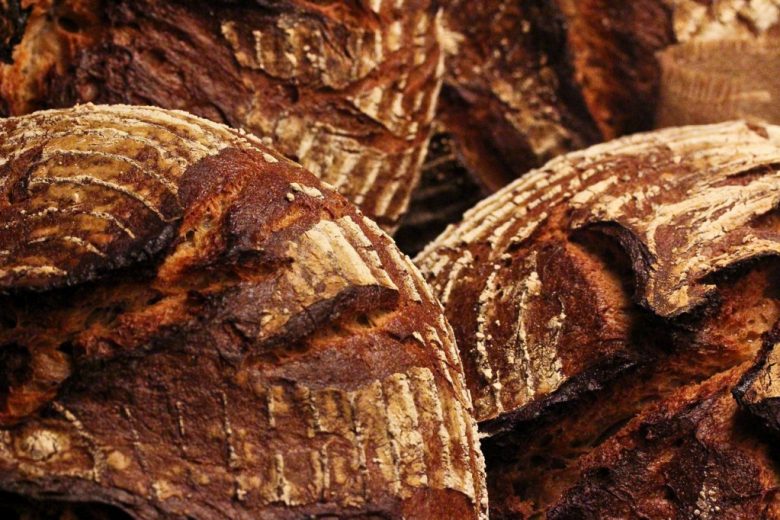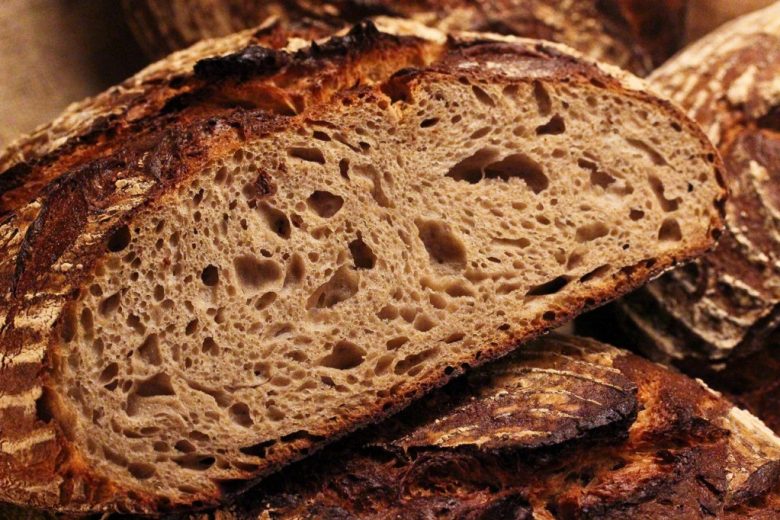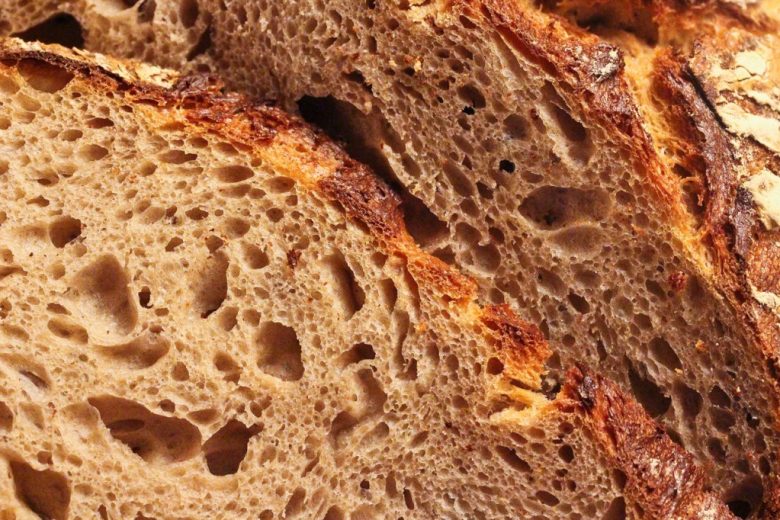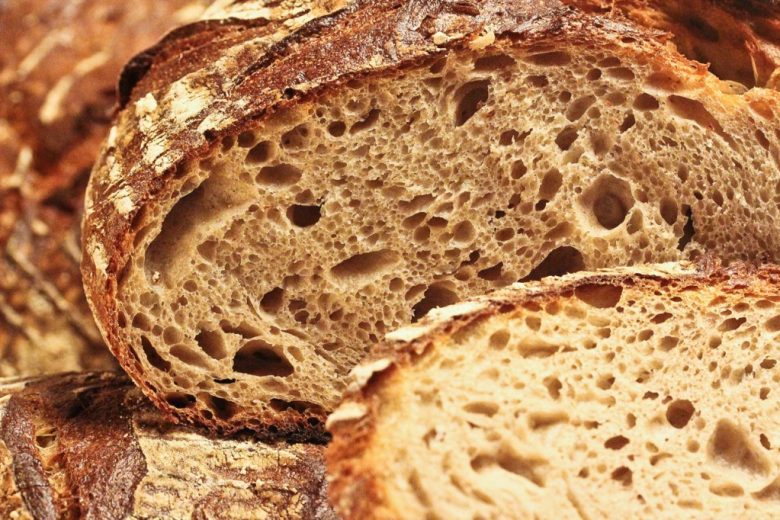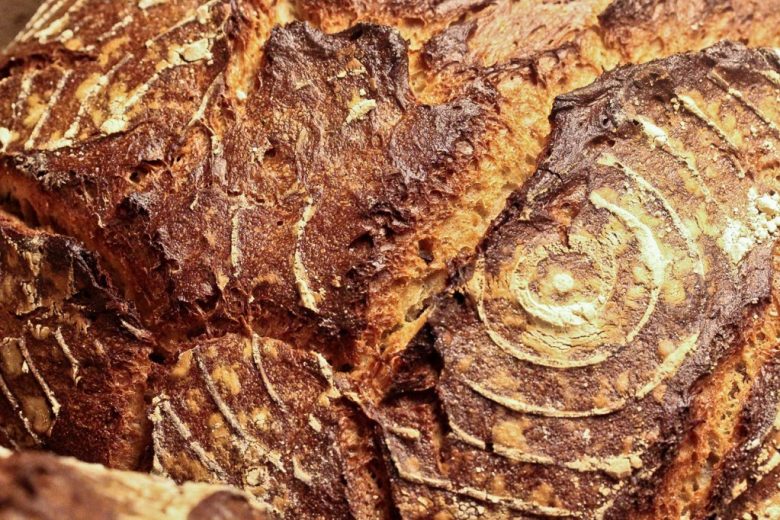Reine de Meule
Recently I have noticed that many readers have problems recognizing when wheat dough is fully kneaded. Reason enough to take a closer look at the mixing and kneading process. In addition to the raw ingredients used, the quality of the bread is decisively influenced in the kneading process. The processes involved in the formation of the dough are of great importance. It is divided into a mixing and kneading phase.
Mix phase
This is important to ensure the optimal dissolution and hydration of the flour particles with the liquid. The dough heats up very little and the end of the mixing phase is reached when the dough mass has developed into a homogenous dough.
Kneading phase
The intensive working of the dough accelerates the dough-forming process. The swollen strands of gluten gradually form a thin adhesive film. When the dough is formed, the water absorption is significantly influenced by the flour components and bound as follows:
- approx. 50% of the liquid is bound by the proteins (gliadin and glutenin)
- approx. 30% of the liquid is bound by the starch and bran
- approx. 20% of the liquid remains unbound on the surface of the dough particles
Kneading system/ amount of dough
The development of the dough also depends very much on the kneading machine chosen. Depending on the speed, the kneading arm and the capacity of the kneading bowl, the dough development time can be very different. Due to the greater friction effect, the following applies: the larger the amount of dough, the more intensive the mixing process. The amount of dough should therefore be matched to the volume of the kneading machine.
Dough temperature
The dough development time is just as dependent on the temperature of the bulk liquid. The lower the temperature, the longer the mixing phase, because the water-insoluble proteins delay the water-binding capacity.
Hydration (Teigausbeute)
WIth very soft wheat doughs (Hydration[TA] 180-190) it can take more than 12 minutes to knead the dough! Since the kneading tool has less resistance, the gluten framework develops significantly more slowly. Long kneading times are possible due to the slow heating of the dough. In order to guarantee optimal dough development with soft dough, it is advisable not to add all of the bulk liquid from the beginning, but rather gradually. Delayed addition of salt also has a positive effect on the development of gluten.
Characteristics of well kneaded wheat dough
Under-kneaded wheat dough
- Surface has a slight sheen (moist surface)
- Surface is not yet smooth (island-like cracks)
- Coarse gluten structure (dough tears when pulled)
- The dough cannot yet form “window panes”
Well-kneaded wheat dough:
- The dough releases from the side of the mixing bowl
- The surface appears taut and not sticky
- The dough can easily form “window panes”
- The dough is very elastic and has a flexible gluten structure
Over-kneaded wheat dough:
- The dough re-adheres to the side of the mixing bowl
- The dough surface takes on a sheen again
- The dough increasingly loses its elasticity
Since the dough condition is determinant of the further workability and the proofing qualities of the dough, the kneading machine should not be let out of your sight during the kneading phase
When using sourdough and other pre-doughs the kneading time must be adjusted. The breakdown of the gluten in the pre-dough stages must be compensated for in the mix- and kneading phases – the dough weakens quickly!
Recipe
For a dough weight of 1928g
Rye sourdough:
- 70g Rye flour Type 960
- 70g Water
- 10g Starter
Hydration (TA): 200 DT: 28°C Maturity time: 15 hours
Poolish:
- 100g Wheat flour Type 700
- 100g Water
- 1g Yeast
Hydration (TA): 200 DT: 25°C (reduced to 4°C in the refrigerator) Maturity time:15-24 hours
Main dough:
- 150g Mature rye sourdough
- 201g Mature Poolish
- 900g T80
- 550g Water (for mixing the Autolyse)
- 100g Water (after the autolyze add in small sips)
- 25g Sea salt
- 3g Yeast
Hydration(TA): 177 DT: 24°C Mixing time: 3 min. slow/ AUTOLYSE/ 8 min. slow/ 4-5 min. fast
Production:
- Mix the rye sourdough, poolish, T80, and 550g of water into a homogenous dough,
- This should be subsequently covered and left to stand and autolyse for 40-60 minutes.
- After the autolyse the dough is mixed for 8 minutes on slow speed. The additional 100g of water is added in small sips during the fast kneading.
- After kneading, the dough is placed in a lightly oiled dough tub to mature (fold the dough after 30 and 60 minutes)!
- Then the dough is divided into 2 equal-sized pieces and shaped into round loaves.
- After shaping the bread loaves can be proofed either cold (4°C) or warm (20°C):
- Cool and long proof: approx. 12-15 hours
- Proofing time at room temperature: approx. 70-90 minutes
“Baking can be done either in a pot or on a baking stone”
“Pot”
- Oven temperature 250°C / 35 minutes at constant temperature. Then remove the lid and bake until the desired level of crust browning.
“Baking stone”
- Oven temperature at 250°C with steam / reduce the temperature to 210°C after 5 minutes and bake until well-browned. The baking time should take at least 45 minutes.


